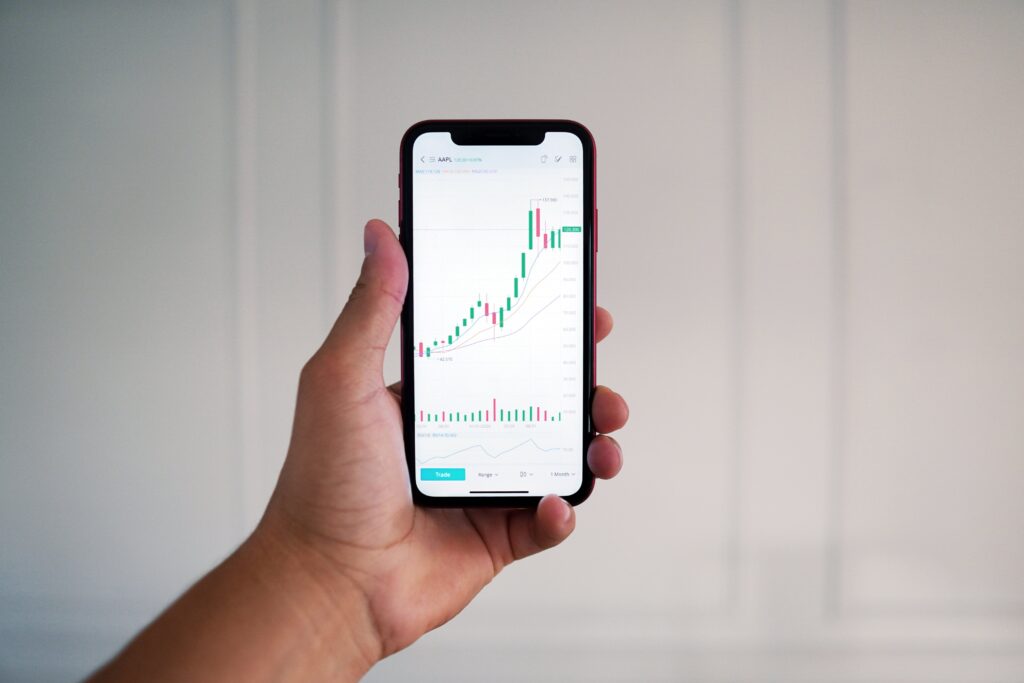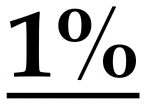Trading Contracts for Difference (CFDs) has become a popular way for investors to participate in the movement of asset prices without owning the underlying assets. CFDs offer traders the opportunity to speculate on price movements in both rising and falling markets across a wide range of financial instruments, including stocks, forex, commodities, and indices. However, navigating the CFD market requires a blend of strategic planning, market insight, and risk management.
| Try our free forex signal service via Messenger: Click here |
In this article, “How to Trade CFDs with Success,” we will delve into the essential strategies, tools, and mindset needed to trade CFDs effectively. From understanding the fundamentals of how CFDs work to implementing advanced trading techniques and managing your risk exposure, this guide aims to equip you with the knowledge to embark on your CFD trading journey with confidence and achieve success in the dynamic world of leveraged trading.
What are CFDs?
Contracts for Difference (CFDs) are sophisticated financial instruments that allow traders to speculate on the price movement of assets without actually owning the underlying assets. Essentially, a CFD is a contract between a trader and a broker to exchange the difference in the price of an asset from when the contract is opened to when it is closed. The concept enables traders to benefit from price movements in either direction – gains can be made from both rising and falling markets, depending on whether a trader goes long (buys) or short (sells) on a CFD.

CFDs cover a wide range of markets, including stocks, indices, commodities, currencies (forex), and even cryptocurrencies. One of the main attractions of CFD trading is the leverage it offers, which allows traders to open larger positions with a relatively small amount of capital. However, while leverage magnifies potential profits, it also increases potential losses, making it crucial for traders to understand the risks involved. Additionally, CFDs are typically traded on margin, meaning traders only need to deposit a fraction of the full value of the trade, further enhancing the potential for high returns but also increasing risk. Given their complexity and risk, CFDs are best suited for experienced traders who have a clear understanding of the markets and effective risk management strategies.
What is leverage?
Leverage is a powerful financial tool used in trading and investing that allows an individual to control a larger position in an asset with a relatively small amount of capital. Essentially, leverage provides traders and investors the ability to amplify their exposure to a market without the need for the full investment amount typically required to own the asset outright. It’s akin to using borrowed funds to increase one’s trading position, aiming to enhance potential returns from an investment. For example, with a leverage ratio of 10:1, a trader can control a $10 000 position in the market with just $1 000 of their own capital.
However, while leverage can significantly increase the potential for profit, it also escalates the risk of loss. The magnification works both ways; just as returns can be amplified, so too can losses. This means that if the market moves against the leveraged position, traders can incur losses much greater than the initial amount invested. Therefore, leverage must be used with caution and a clear understanding of its implications. Successful use of leverage requires a robust risk management strategy, including the use of stop-loss orders and constant market monitoring, to protect against the volatility of financial markets. In essence, leverage can be a powerful ally for informed traders aiming to maximize their market exposure, but it demands respect and careful management to avoid potentially significant losses.
What is margin?
Margin in trading refers to the use of borrowed funds from a broker to trade a financial asset, which forms the collateral for the loan from the broker. Essentially, margin is the amount of capital required to open and maintain a leveraged position in the market. It’s a way for traders to amplify their trading capacity and increase their exposure to financial markets without needing the full amount of capital that would normally be required to own the asset outright. Margin trading enables traders to open larger positions with a relatively small amount of invested capital, leveraging their potential returns on investment.
However, trading on margin also introduces a higher level of risk, as it not only amplifies potential profits but also potential losses. If the market moves unfavorably, traders may face losses that exceed their initial investment, leading to a margin call from the broker. A margin call occurs when the value of the account falls below the broker’s required minimum level, and the trader is required to deposit additional funds to maintain their positions or close them at a loss. Therefore, understanding how margin works and effectively managing one’s margin levels are crucial for anyone engaging in leveraged trading. Proper risk management practices, such as setting stop-loss orders and regularly monitoring open positions, are essential to mitigate the risks associated with margin trading.
How to trade CFDs successfully
Although this might all be new and somewhat frightening for beginner traders, fear not. We’re here to help you towards your goals and become a successful trader. Here are a few tips you can follow to increase your likelihood of profiting from CFD trading.
Develop a plan and strategy

Developing a comprehensive plan and strategy is fundamental to achieving success in trading. This involves setting clear objectives, defining risk tolerance, and establishing a methodical approach to entering and exiting trades. A well-thought-out trading plan acts as a roadmap, guiding traders through the complexities of the market with discipline and consistency. It should outline specific criteria for making trade decisions, including which markets to trade, how much capital to allocate to each trade, and under what conditions to increase or decrease position sizes. If you have extensive knowledge of some types of instruments, it might be a good idea to focus on these specific instruments for example.
A robust trading strategy, on the other hand, is the methodology or system that a trader uses to decide when to buy or sell an asset. This can range from technical analysis, fundamental analysis, or a combination of both, to more specific strategies like trend following, swing trading, or scalping. A strategy should be back-tested on historical data and adjusted according to its performance in different market conditions. It’s also crucial that traders remain flexible and prepared to refine their strategies in response to changing market dynamics. Ultimately, the key to a successful trading plan and strategy lies in its execution and the trader’s ability to remain disciplined, manage risks effectively, and learn continuously from the trading experience.
There are hundreds hundreds of pre-defined strategies already out there. Some are relatively simple, others are much more complex. Developing a trading strategy involves considerations such as investment style (e.g. risk profile, value vs growth), technical analysis, indicators, time horizon, leverage, and so on. A vital aspect is that a trading strategy be set using objective data and considerations and is followed diligently. At the same time, a strategy should be periodically re-evaluated and tweaked.
Stick to your strategy
A trading strategy defines your approach to the markets, encompassing how you plan to enter and exit positions, along with the tools and indicators you plan to utilize. The choice of strategy will be influenced by the amount of time you’re willing to dedicate to market analysis and trading activities. Depending on your preferences and lifestyle, you might opt for various trading styles such as day trading, swing trading, or scalping.
Adhering to your chosen CFD trading strategy is vital because it helps reduce the likelihood of making trades based on emotional reactions like fear or greed. It’s just as critical to recognize when your strategy isn’t performing as expected. This can be done by maintaining a detailed trading journal of your successful and unsuccessful trades and conducting thorough back-tests of your strategy. Keeping such records not only aids in identifying the effectiveness of your strategy but also assists in making informed adjustments to improve future trading outcomes.
Choice of broker
Choosing the right broker is a critical decision for any trader, especially when trading Contracts for Difference (CFDs). The broker acts as your gateway to the markets, and their reliability, fees, and the range of services they offer can significantly impact your trading success. The brokers’ features should enable you to utilize your preferred strategies. A reputable broker should be regulated by a well-recognized authority, ensuring they adhere to strict financial standards and provide a secure trading environment. Regulation also offers a level of protection for your funds, with many jurisdictions requiring brokers to keep client funds in segregated accounts. An EU-based broker is always a good choice, as it is obliged to follow heavy regulations from the EU that protect you and your resources.

Beyond regulation, consider the broker’s trading platform, as it should be user-friendly, stable, and equipped with the tools and features necessary for effective market analysis and trade execution. Look for platforms that offer real-time data, technical analysis tools, and automated trading capabilities. The cost of trading is another vital factor; compare spreads, commission rates, and any other fees that could eat into your profits. Customer support is equally important, as having access to prompt and knowledgeable assistance can be crucial, especially in fast-moving markets.
Finally, evaluate the educational resources and research tools the broker provides, as these can enhance your market understanding and trading skills. In sum, selecting a broker that aligns with your trading needs and goals is essential for a supportive and productive trading experience.
Experiment with a demo account
Starting out with a demo account is a prudent step for any new trader. Demo accounts allow you to trade in a risk-free environment using virtual money, offering a practical way to familiarize yourself with the trading platform’s features and tools without the stress of losing real capital. It’s an invaluable opportunity to test your trading strategies, understand market dynamics, and refine your decision-making process under simulated market conditions. Moreover, using a demo account helps in building confidence and competence, which are crucial before transitioning to live trading. Essentially, a demo account serves as a bridge between theoretical learning and real-world trading, ensuring that you are better prepared when you finally start trading with your own money.
Furthermore, if you want to develop or test a new strategy, trade new instruments, etc. it can be a good idea to do this on a demo account. This enables you to familiarize yourself with new strategies, instruments, and markets without risking real money.
Education and information
Education and staying informed are indispensable components of successful trading. The financial markets are dynamic and complex, with a multitude of factors influencing price movements. As such, a solid foundation in the basics of trading, market analysis, and the understanding of financial instruments is essential. Continuous education through online courses, webinars, trading tutorials, and reading market analysis helps traders to stay abreast of trading strategies, risk management techniques, and the latest trading technologies. Knowledge of economic indicators, understanding charts, and the ability to interpret news events are skills that are honed over time and can significantly impact trading decisions.
| Try our free forex signal service via Messenger: Click here |

Moreover, staying informed about global economic events, market trends, and financial news is crucial for making educated trading decisions. Economic calendars, financial news websites, and market analysis reports are valuable resources that provide insights into how market-moving events might influence different assets and sectors. In today’s fast-paced trading environment, being well-informed can be the difference between a profitable trade and a loss. This requires not just an initial investment in learning but a commitment to ongoing education and staying updated with the market conditions. In essence, education and staying informed are continuous processes that equip traders with the tools needed to navigate the markets effectively and adapt to its ever-changing nature.
Risk management and the use of stop-loss orders
Risk management is a critical aspect of successful trading, serving as a safeguard against the unpredictable nature of the financial markets. At its core, risk management involves identifying, assessing, and prioritizing risks, followed by the coordinated and economical application of resources to minimize, monitor, and control the probability or impact of unforeseen losses. Effective risk management strategies include setting stop-loss orders, managing position sizes, and diversifying portfolios. Stop-loss orders are particularly vital as they automatically close out a trade at a predetermined price level to prevent further losses. By setting stop-loss levels, traders can ensure they only risk a certain percentage of their trading capital on a single trade, thereby protecting their account from significant drawdowns.
Moreover, understanding and implementing proper position sizing is fundamental to risk management. It ensures that traders do not overexpose themselves in a single trade by calculating the appropriate amount of capital to risk based on the stop-loss level and the size of their trading account. Diversification across different assets and market sectors can also help mitigate risk by spreading exposure, reducing the impact of poor performance in any single investment. Ultimately, effective risk management and the strategic use of stop-loss orders allow traders to survive the highs and lows of market volatility, preserving capital for future opportunities. These practices form the bedrock of a disciplined trading approach, enabling traders to achieve long-term success in the financial markets.
The 1% rule

If you want to avoid burning yourself while trading CFDs, it can be smart to follow the 1% rule. This rule dictates that you shouldn’t invest more than 1% of your account balance.
1% might seem low, considering if you have an account with $1000, you shouldn’t invest more than $10 on a single trade. However, the catch is the leverage, meaning you risk more than you invest. Therefore, we advise you to never invest more than 1% of your account balance, at least in the beginning.
The bottom line
Trading Contracts for Difference (CFDs) opens up opportunities for profiting from price movements in various financial markets without owning the underlying assets. Understanding CFDs is crucial; they’re contracts between traders and brokers to exchange the difference in an asset’s price from opening to closing the trade, allowing speculation on price movements in both directions. Leverage, a hallmark of CFD trading, enables controlling large positions with relatively small capital but also increases potential losses, underscoring the importance of risk management.
Developing a solid trading plan and strategy tailored to personal objectives and risk tolerance is fundamental. Strategies may include technical analysis, fundamental analysis, or a mix, adjusted based on performance in varying market conditions. Adhering to a strategy minimizes impulsive trading driven by fear or greed. Choosing the right broker, regulated by authoritative bodies, with a user-friendly platform, reasonable costs, and robust customer support, is critical for a supportive trading experience. Starting with a demo account helps in strategy testing and gaining market familiarity without financial risk.
Education and staying informed about market trends and global economic events are indispensable for informed decision-making. Implementing effective risk management strategies, such as setting stop-loss orders and not risking more than 1% of your account balance on a single trade, protects against substantial losses. This comprehensive approach, combining knowledge acquisition, strategic planning, and disciplined execution, equips traders for navigating the complexities of CFD trading and achieving long-term success.